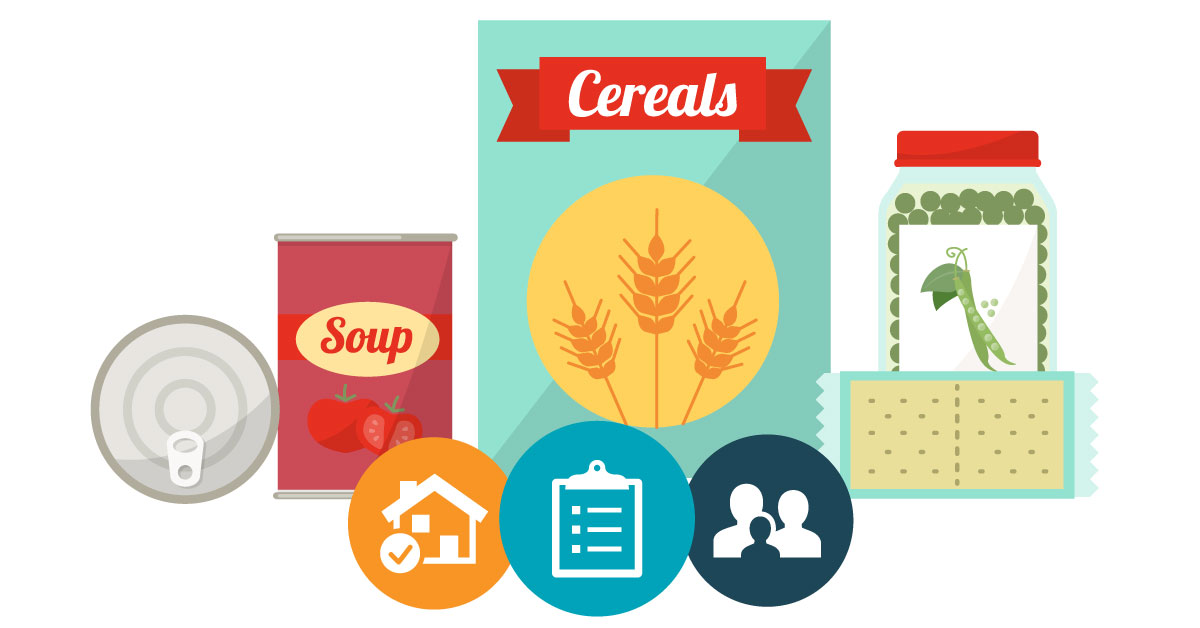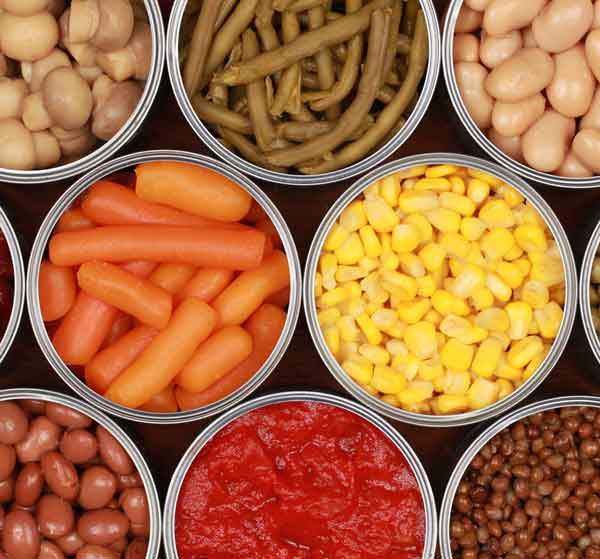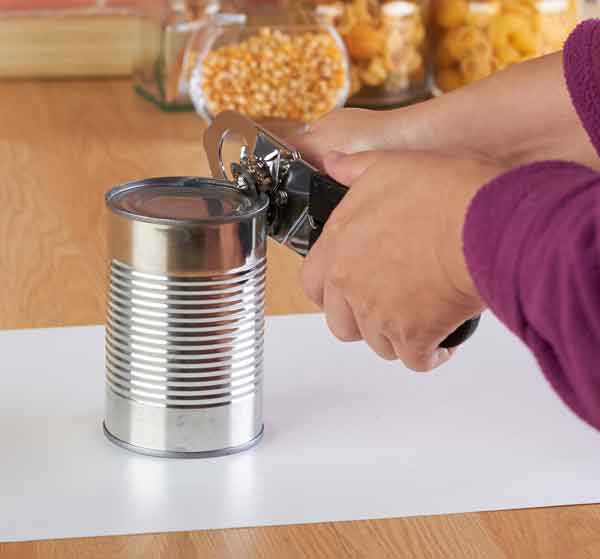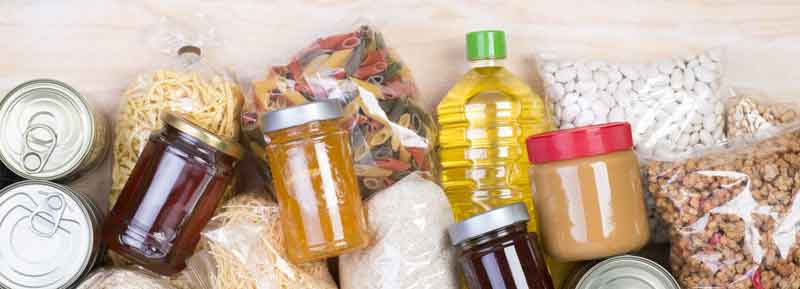Food Supply

This month’s goal:
The key to a good food storage plan is to buy ahead of time. Replace items before they run out. Buy items when they are on sale. A large duffle bag or plastic tub with a lid makes a great storage place for an emergency food supply. Put aside a three-day supply of food for disasters.
Follow the BUS rule to help you. BUS stands for balance, usability, and shelf life.
Balance
A balanced diet includes a variety of foods from each of the basic food groups. Also, include high energy foods (such as nuts and protein bars) and comfort foods (such as graham crackers or chocolate).

Shelf Life
Use and replace foods before the expiration date. Take steps to make sure food in your refrigerator and freezer will stay safe. During an extended power outage, temperatures in your fridge and freezer will begin to rise, even if the doors stay closed. As the temperature rises, harmful bacteria may begin to grow on your food. If the temperature in your fridge stays above 41 degrees Fahrenheit for more than four hours, perishable food items may be unsafe to eat. Food that still contains ice crystals should be safe.
Usability
Choose items that don’t need to be cooled, heated, or need a lot of water. Examples include canned or dried meat, dry cereal, and canned vegetables. Make sure you have a manual can opener if you plan to use canned goods.

When the power goes out:
- Cover the fridge or freezer in newspapers and blankets. Keep vents clear in case the freezer starts operating again.
- Avoid opening the door to the fridge or freezer.
- Use dry ice, if available. Identify a source for dry ice in advance and remember that if the power outage is widespread, there may be a lot of competition for this resource.
Take steps now to make sure your perishable food remains as safe as possible:
- Install a thermometer in your fridge and freezer.
- If you anticipate a power outage, such as a winter storm, reduce the temperature of your fridge and freezer. The colder your food is, the more time it takes to thaw.
- Keep containers of ice in your freezer to keep the temperature down.
Make sure you can meet any special dietary needs in your household. Talk to your health care provider or a nutritionist about nonperishable menu options that can be used if you can’t get to a grocery store, or that can be prepared at an emergency shelter. Keep a description of your medical condition and the diet in your emergency kit.

